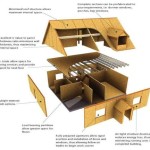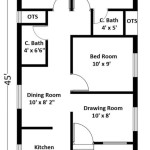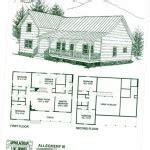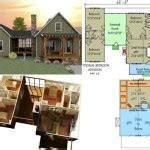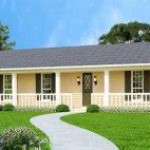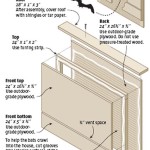Small cabin house plans provide a blueprint for constructing cozy and functional dwellings with limited square footage. These plans often cater to individuals or families seeking refuge in nature, downsizing enthusiasts, or those aspiring to own a vacation retreat.
From enchanting A-frame cabins nestled amidst towering trees to compact log homes exuding rustic charm, small cabin house plans encompass a wide range of architectural styles and design options. Their efficient use of space and focus on natural materials create a harmonious blend of comfort and simplicity.
In the following sections, we will delve into the intricacies of small cabin house plans, exploring various design considerations, floor plan layouts, and sustainable building practices. Whether you’re an aspiring homeowner or simply intrigued by the concept of cozy living, this article will provide valuable insights into the world of small cabin design.
When crafting small cabin house plans, several important considerations come into play:
- Optimize space
- Maximize natural light
- Incorporate sustainable features
- Choose durable materials
- Consider energy efficiency
- Plan for storage solutions
- Design a functional layout
- Consider outdoor living spaces
- Prioritize comfort and coziness
By carefully addressing these aspects, you can create a small cabin that meets your specific needs and provides a comfortable and inviting living space.
Optimize space
In small cabin house plans, optimizing space is crucial to create a comfortable and functional living environment. Here are some key strategies to maximize space utilization:
Multi-purpose furniture: Choose furniture pieces that serve multiple functions. For example, a sofa bed can provide both seating and sleeping arrangements, while a coffee table with built-in storage can keep your belongings organized and out of sight.
Vertical storage: Make the most of vertical space by incorporating shelves, drawers, and cabinets that reach from floor to ceiling. This allows you to store items vertically, freeing up valuable floor space.
Built-in storage: Utilize the space under stairs, in closets, and along walls by building custom storage solutions. This can include drawers, shelves, and cubbies tailored to your specific needs.
Declutter and minimize: Regularly declutter your belongings and keep only the essentials. Consider renting a storage unit for seasonal items or items you don’t use frequently to free up space in your cabin.
By implementing these space-saving techniques, you can create a small cabin that feels spacious and comfortable, without sacrificing functionality or style.
Maximize natural light
Incorporating ample natural light into your small cabin house plans is essential for creating a bright and airy living space. Here are some key strategies to maximize natural light:
Windows and skylights: Place windows and skylights strategically throughout your cabin to allow for maximum sunlight penetration. Consider installing large windows along south-facing walls, as this orientation receives the most sunlight throughout the day. Skylights can also be a great way to bring in natural light from above, especially in areas with limited wall space.
Light-colored walls and ceilings: Choose light-colored paints and finishes for your walls and ceilings. These colors reflect light, making your cabin feel more spacious and inviting. Dark colors, on the other hand, absorb light and can make a small space feel even smaller.
Translucent materials: Incorporate translucent materials, such as frosted glass or acrylic, into your design. These materials allow light to pass through while maintaining privacy, making them ideal for use in bathrooms or other areas where privacy is desired.
Outdoor living spaces: Extend your living space outdoors by creating a deck, patio, or screened porch. This allows you to enjoy natural light and fresh air while expanding your usable square footage.
By implementing these strategies, you can create a small cabin that is filled with natural light, making it feel more spacious, inviting, and connected to the outdoors.
Incorporate sustainable features
Incorporating sustainable features into your small cabin house plans is essential for reducing your environmental impact and creating a healthier, more comfortable living space. Here are some key strategies to consider:
Energy efficiency
Design your cabin to be energy efficient by using energy-efficient appliances, lighting, and building materials. Consider installing solar panels or a geothermal heating and cooling system to reduce your reliance on fossil fuels. Proper insulation and air sealing will also help to minimize heat loss and keep your cabin comfortable year-round.
Water conservation
Conserve water by installing low-flow fixtures, such as toilets, faucets, and showerheads. Consider collecting rainwater for irrigation or other non-potable uses. You can also implement greywater systems to reuse water from sinks and showers for flushing toilets or watering plants.
Sustainable materials
Choose sustainable building materials that have a low environmental impact. This includes using recycled materials, sustainably harvested wood, and natural materials like bamboo or cork. Avoid using materials that contain harmful chemicals or toxins, such as formaldehyde or VOCs (volatile organic compounds).
Waste reduction
Design your cabin to minimize waste production. This includes incorporating composting systems, recycling bins, and using reusable materials whenever possible. Consider building your cabin on a smaller footprint to reduce the amount of land disturbance and habitat loss.
By implementing these sustainable features, you can create a small cabin that is not only comfortable and functional, but also environmentally responsible and healthy for you and your family.
Choose durable materials
When selecting materials for your small cabin house plans, durability is key. Durable materials will withstand the elements and last for many years to come, saving you money on repairs and replacements in the long run.
- Pressure-treated lumber: Pressure-treated lumber is treated with chemicals that protect it from rot, decay, and insects. It is a good choice for decks, porches, and other outdoor structures.
- Cedar: Cedar is a naturally rot-resistant wood that is also resistant to insects and decay. It is a good choice for siding, roofing, and other exterior applications.
- Metal roofing: Metal roofing is a durable and long-lasting option that is resistant to fire, rot, and insects. It is also a good choice for areas with high winds or heavy snow loads.
- Fiber cement siding: Fiber cement siding is a durable and low-maintenance option that is resistant to fire, rot, and insects. It is also a good choice for areas with high humidity or coastal climates.
By choosing durable materials for your small cabin house plans, you can create a home that will last for many years to come.
Consider energy efficiency
Incorporating energy-efficient features into your small cabin house plans is essential for creating a comfortable and sustainable living space. Here are some key strategies to consider:
- Insulation: Proper insulation is crucial for minimizing heat loss and maintaining a comfortable temperature inside your cabin. Choose insulation materials with a high R-value, which measures their resistance to heat flow. Consider insulating your walls, roof, and floor to reduce heat loss and improve energy efficiency.
- Windows and doors: Windows and doors can be major sources of heat loss. Choose energy-efficient windows and doors with double or triple glazing and low-E coatings to minimize heat transfer. Consider installing storm windows or doors for added insulation during cold weather months.
- Heating and cooling systems: Choose energy-efficient heating and cooling systems that are right-sized for your cabin. Consider installing a heat pump, which can both heat and cool your cabin efficiently. You can also consider passive solar design techniques to reduce your reliance on mechanical heating and cooling systems.
- Appliances and lighting: Choose energy-efficient appliances and lighting fixtures to reduce your energy consumption. Look for appliances with the ENERGY STAR label, which indicates that they meet certain energy-efficiency standards. Consider using LED lighting throughout your cabin, as LED bulbs are highly energy-efficient and last longer than traditional incandescent bulbs.
By implementing these energy-efficient strategies, you can create a small cabin that is comfortable and sustainable, while also reducing your energy costs and environmental impact.
Plan for storage solutions
In small cabin house plans, storage solutions are crucial for keeping your belongings organized and your cabin clutter-free. Here are some key strategies to consider:
- Vertical storage: Utilize vertical space by installing shelves, drawers, and cabinets that reach from floor to ceiling. This allows you to store items vertically, freeing up valuable floor space.
- Multi-purpose furniture: Choose furniture pieces that serve multiple functions. For example, a sofa bed can provide both seating and sleeping arrangements, while a coffee table with built-in storage can keep your belongings organized and out of sight.
- Built-in storage: Utilize the space under stairs, in closets, and along walls by building custom storage solutions. This can include drawers, shelves, and cubbies tailored to your specific needs.
- Declutter and minimize: Regularly declutter your belongings and keep only the essentials. Consider renting a storage unit for seasonal items or items you don’t use frequently to free up space in your cabin.
By implementing these storage solutions, you can create a small cabin that feels spacious and comfortable, without sacrificing functionality or style.
Design a functional layout
Creating a functional layout is essential for maximizing space and comfort in small cabin house plans. Here are some key considerations:
Define your needs: Start by defining your specific needs and how you plan to use your cabin. Consider the number of people who will be using the cabin, the types of activities you will be doing, and the amount of storage space you will need.
Create a central living space: The living space should be the heart of your cabin, where you can relax, entertain guests, and enjoy the outdoors. Consider an open floor plan to create a spacious and inviting atmosphere, and incorporate large windows to bring in natural light and connect you with the surrounding environment.
Maximize natural light: Natural light can make a small cabin feel more spacious and inviting. Place windows and skylights strategically to allow for maximum sunlight penetration. Consider using light-colored walls and ceilings to reflect light and make the space feel larger.
Incorporate storage solutions: Storage is crucial in small cabin house plans. Utilize vertical space by installing shelves, drawers, and cabinets that reach from floor to ceiling. Consider multi-purpose furniture, such as ottomans with built-in storage, to maximize space and keep your belongings organized.
By carefully considering these factors, you can create a functional layout that meets your specific needs and provides a comfortable and inviting living space in your small cabin.
Consider outdoor living spaces
Extending your living space outdoors is a key aspect of small cabin house plans. By incorporating outdoor living spaces, you can enjoy the beauty of nature, create additional space for entertaining and relaxation, and increase the overall functionality of your cabin.
- Create a deck or patio: A deck or patio provides an outdoor space for relaxing, dining, and enjoying the views. Choose a location that offers privacy and protection from the elements, and consider incorporating built-in seating or a fire pit to enhance your outdoor experience.
- Build a screened porch: A screened porch allows you to enjoy the outdoors without being bothered by insects. It is a great place to relax, read, or entertain guests. Consider adding ceiling fans or screens to provide additional comfort and protection from the elements.
- Install a fire pit or outdoor fireplace: A fire pit or outdoor fireplace creates a cozy and inviting atmosphere for gatherings and relaxation. Choose a location that is safe and away from any flammable materials, and consider incorporating built-in seating or benches around the fire.
- Create a garden or outdoor kitchen: If you enjoy gardening or cooking, consider adding a garden or outdoor kitchen to your cabin plans. This allows you to grow your own food, prepare meals outdoors, and
Prioritize comfort and coziness
Creating a comfortable and cozy atmosphere is essential in small cabin house plans. Every detail, from the choice of furniture to the overall design, should contribute to a sense of warmth and well-being.
Choose comfortable furnishings: Opt for furniture that is not only stylish but also comfortable to sit and relax in. Consider plush sofas, cozy armchairs, and ottomans with soft cushions. Soft throws and blankets can add an extra layer of warmth and comfort.
Incorporate natural materials: Natural materials, such as wood, stone, and cotton, create a warm and inviting ambiance. Use wood for flooring, walls, and furniture to bring the beauty of nature indoors. Stone fireplaces and countertops add a rustic touch and provide a focal point for the space.
Maximize natural light: Natural light can instantly make a space feel more inviting and cozy. Incorporate large windows and skylights to allow ample sunlight to enter the cabin. Choose light-colored curtains or blinds that filter the light without blocking it out completely.
By prioritizing comfort and coziness in your small cabin house plans, you can create a space that feels like a true sanctuary, a place where you can relax, recharge, and connect with nature.

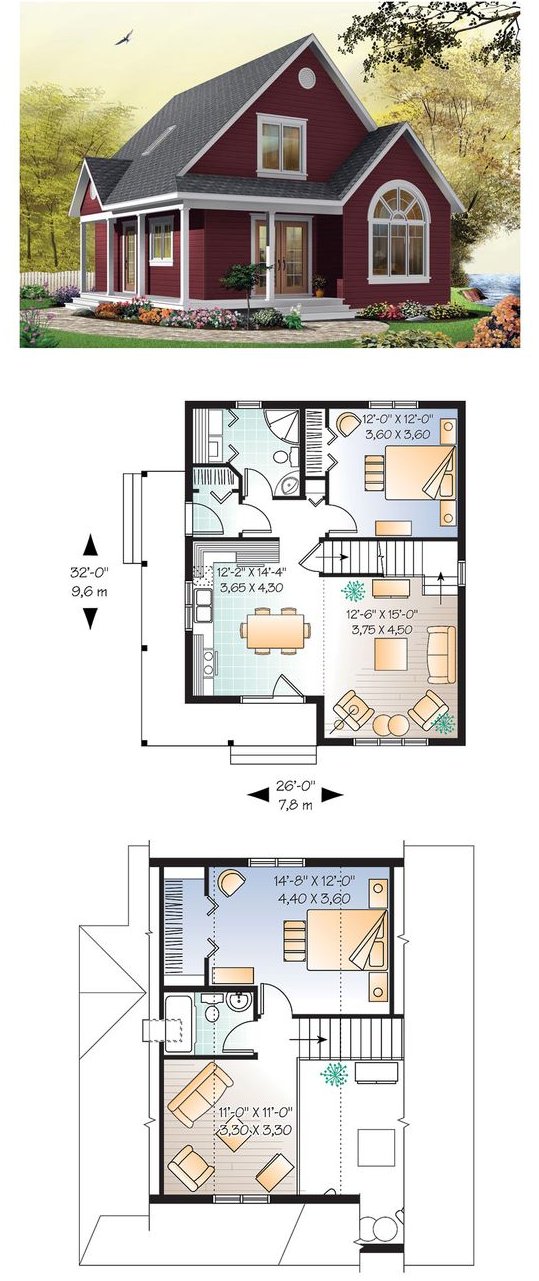







Related Posts


